OTHER ITK
RAT CONTROL
BIRD SCARING
WATER SOURCE INDENTIFICATION
PREDICTING RAIN FALL
ANIMAL MANAGEMENT
RAT CONTROL
- Rats do not live in fields where sheep penning is being practiced.
- Planting closely notchi( Vitex negundo) and erukku (Calotropis gigantea) around the fields as a fence helps to control rat problem.
- Putting the branches of Thangarali (Tecoma Stands) around the fields to control rats.
- 'To control rats in paddy fields, Channampoo (Cycas cercinalis) flowers are cut in to pieces and placed in many places whose bad odour drives away the rats.
- Pieces of palmyra (Borassus flabellifei) leaves are tied on the poles fixed on the field. The sound produced by the leaves scares away the / rats
- Providing owl stands near the rat holes will help in reducing the rat damage.
- To reduce rat population, rat holes are dug and rats are killed after each harvest.
- To catch the rats, a trap made up of wire loops on bamboo pegs is being used.
- Big round shaped earthen pots are burried on the field at ground level. Half of the pot is filled with mud slurry on which baiting material is put on a coconut shell. Attracted rats fall inside the pot and they cannot climb up and get killed.
- Use of soaked rice as bait attracts more rats.
- Putting fresh cow dung on both the fields and bunds to reduce rat problem.
Integrated Rat Management - Videos
 |
 |
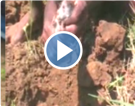 |
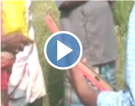 |
| Bromodialon cake (Tamil) |
Bromodialon Powder (Tamil) |
Bund Farming (Tamil) |
Glue board final (Tamil) |
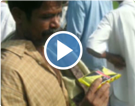 |
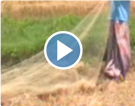 |
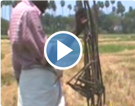 |
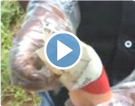 |
| Integerated Rat management (Tamil) |
Rat net method (Tamil) |
Thanjavur kitty (Tamil) |
Zinc phosphide (Tamil) |
Source
IFPRI Project,
ICAP - Center for advancement in Agricultural Practices
Thanjavur
Phone: 9944277551
madhumitha.seraraja@iccap.org.in
BIRDS SCARING
- Stones are thrown with the help of 'Kavan' made by tying a long piece of gunny thread to both ends of a small piece of leather.
- Stones are thrown with the help of a leather rope called 'Kalattai' to scare the birds.
- Tying the carcass of a crow to a long pole and placing it in the centre of fields.
- Tying a black cloth to a long pole and placing it in the centre of fields to drive away the crows.
- Waste magnetic tapes taken from an audiocassette are tied in the fields in a criss cross manner which the birds will think as a net.
WATER SOURCE INDENTIFICATION
- In places where Ficus religiosa tree is found, underground water will be more.
- Underground water will be more in places where the neem tree with more knots is found.
- In places where termite hills are found, underground water will be more.
- Farmers are practicing traditional method of using neem stick, metals etc. for finding the water resource in underground for digging wells. While they are walking with this stick on hand it will be rottate automatically at the place where underground water is surplus.
- Some farmers are using the magnetic stones for identifying water sources. Magnet is tied with a thread and held like a pendulum while walking over the fields. The magnet will rotate automatically at the place where underground water is more and this is taken as the indication for digging wells.
PREDICTING RAINFALL
- The rain birds lays egg at the ground level then, there will be less rain however; if the eggs are laid at higher elevation then it is the indication of more rains The local people assume that eggs of rain birds are laid on such a height that in case of more or less rains, the egg will not be submerged in rain water. Similarly, if the narrow ends of all the four eggs of rain bird are downwards, then if is the indication of good rain fall through out the season
- When the adventitious roots of the banyan tree[Ficus bengalensis] start sprouting [tillering] and then the local people assume that the rains will appear with in 2-4 days
- In castor (Ricinous spp) and ber (Ziziphus nummularia) when the buds start sprouting, then it is predicted that rains will appear within 10-15 days.
- The rains will appear after 10-15 days of flowering in babul tree
(Acacia nilotica)
-
As soon ass the neem kernels ripen and start falling, it is expected that there will be rains after 10-15 days
-
Rain may come if damsel fly flies at ground surface, frogs make noise and ants move in line from one place to another
-
The farmer also forecasting rains by observing the direction of wind/clouds. According to them Westerly winds/clouds meant good rainfall. Similarly Northwesterly clouds will bring hailstorm.
-
Thunder in summer and lightening in rainy season bring heavy rain.
-
If rain occurs in the last week of 'Aavani' (Aug.-Sep.) month, crop yield will be more in the succeeding month.
-
Rainfall occurring during and after the Tamil month 'Marghazhi' (Dec.-Jan.) does not benefit the crop and soil but affects the grains
-
If a rainbow appears in the east in the evening or west in the morning, it will rain.
-
Streaks of lightening in the East with rainbow in the. west would lead to rain.
-
lf the sky becomes dark near the horizon, there will be instant rain.
-
If the North wind blows, it will surely rain.
-
Instant rain follows the winds blowing from many directions.
-
Ants raising mounds is an indication of rains.
-
Rain can be forecasted by looking at the sight of burrow of ants.
-
If ants move to higher ground with eggs, it will rain.
-
If white ants take wing in the evening, it will rain excessively.
-
If termites fly in the evening time, there will be rainfall.
-
Dragonflies flying low indicate the rainfall.
-
Flight of butterflies from North to South and death of more insects indicates the arrival of rains.
-
Rain follows the frogs crocking. Flocking (crowding together) or fast grazing of sheep’s indicates occurrence of rainfall.
-
It will rain if the cattle look at the sky frequently
ANIMAL MANAGEMENT
Some of the indigenous practices used by the tribals in the area of animal management are as under:
- Castration in males is done by destroying the spermatic cord with a stone / hammer and applying cow dung/ karanji oil as an antiseptic.
- In case of respiratory distress, animals are branded with hot iron rod on the neck
- Treatment of bloat is done by drenching indigenous materials like
- A mixture of 0.5 of buttermilk + 100g mustard oil + 100 g ground rap seed
- Bark of roheda tree (Tecomella undulate) ground and mixed with later
- A mixture of meerchu (local herb) ground 25g of rapseed +1 smal onion + 50g of mustard oil + 25 g of common salt
- Bark of haru tree ground and soaked in water
- A mixture of butter milk + common salt + onion + raw custard apple
- Roots of date palm tree 200 g (ground) and mixed with water
- 5-10 leaves of custard apple (ground) and black cumin (50g) mixedwith buttermilk
4. In case of FMD (foot and mouth disease) a small fish wrapped with a piece of bread is fed to the diseased animal till the animal is not completely cured
5. For de worming the following measures are taken:
- Drenching with copper sulfate 25g in one litre of water
- Dilute neem solution
- Sesame leaves crushed, mixed with water and strained are drenched
6. For control of external parasites, kerosene is applied on the body of animal with the help of cotton gauze
7. To facilitate normal parturition, cow’s buffaloes are fed crushed wheat soaked in water and mixed with jaggery and ghee oil for one month prior to calving
8. For treatment of anestrous in buffaloes, following measures are taken:
- Match stick (teo match boxes) wrapped in a piece of bread is fed to animals
- Seeds of dautra (Datura fasuosa) 4-5 are fed
- Dry flowers of mahua tree (Madhuca indica) 250g boiled in 1 litre of water are fed for 5 days.
- 250g flowers of khakra (Butea monosperma) boiled in 1 litre of water are fed for 4-5 days
- Crushed sorghum (2kg) soaked in water is fed for 2-3 days
- Droppings of poultry mixed with bread or concentrate is fed
9. In case of pneumonia, cactus (used for fencing) is burnt and the ash mixed with water is drenched twice to the animal
10. In case of fractures, (a) leaves of khakra (Butea monosperma) are bandaged all over affected part and splints of bamboo are tied around it. (b) eggs of local poultry breed given
11. In case of excessive salivation (FMD) a tuber sooran (Amorphallus campanulatus ) is ground and drenched with water.
12. To increase milk production the following methods are adopted:
- Feeding of boiled crushed maize 1/2kg to a cow and 1kg to a buffalo for about one month
- Feeding leaves of sem (Dolichos purpureus) and china ber (Zizipus nummularia) increase milk production
After calving, the milk left after sucking of calves is again fed to the cow / buffalo for 15-20 days
|








